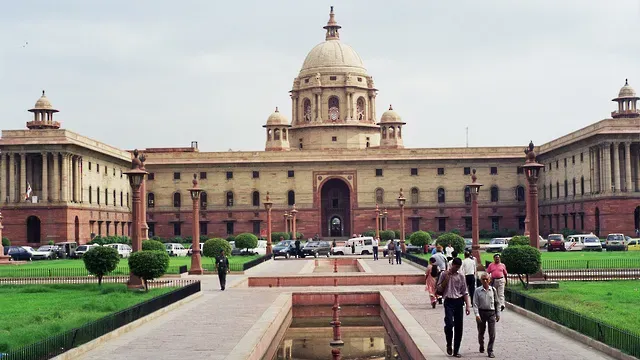The Weekend Read: South Asia's lessons for heatwave-hit West
In conversation with climate resilience entrepreneur Barath Mahadevan

Welcome to this weekend’s edition of Lights On, a newsletter that brings you the key stories and exclusive intel on energy and climate change in South Asia.
If you are not a subscriber, you can sign up below, for free, or you can support my work by purchasing a membership:
Over the past two weeks, various areas of the world have experienced severe heatwaves. Thanks to rapid attribution studies, which estimate the role of climate change in a given weather event using computer models, we know that the abnormally high temperatures recorded this month in the US and Canada are likely due to climate change. In South Asia, the city of Jacobabad in Pakistan has become the symbol of this year's climate-fueled heatwave in the region, when temperatures briefly reached the threshold of heat and humidity that is incompatible with human life. However, while in the US and Canada tens of people died of heatstroke, and infrastructure has suffered across the region, South Asia seems to have responded better with fewer casualties and disruptions. I spoke with Barath Mahadevan, CEO of Climate-B Ventures, a startup that supports industries through their transformation to climate resilience, to understand what went wrong in the West.
Lights On: Can you help us make sense of this apparent disparity between South Asia and North American nations when it comes to heatwaves? Why is the West unprepared despite having access to greater resources?
Barath Mahadevan: These extreme events are as clear an indication as any that the planet’s climate is changing rapidly. Climate modelers have repeatedly been pointing to an increase in the frequency and intensity of such extreme events going forward.
In terms of heatwave mortality, South Asia is equally, if not more, vulnerable. For instance, between 2000 and 2018 more than 6,000 casualties were reported due to heatwaves in India and the year 2015 alone accounted for about 34 percent of that figure. As of today, 100 cities and 23 states have partnered with the National Disaster Management Authority to develop adaptation plans to reduce the impact of heatwaves on the population.
Despite having among the highest annual cooling degree days (a measure of the energy demand to cool buildings) in the world, AC penetration is somewhere in the range of 7-8 percent of households in India. Given such a low penetration, one would expect an even higher degree of mortality than what has been reported.
My sense is that certain lifestyle choices in South Asia may have contributed to a degree of adaptive capacity. For instance, traditional rural households have preferred to use mud bricks for centuries – this provides natural insulation and offers better thermal comfort during extremely hot summer days. Bamboo serves the same purpose in Bangladesh and north-east India. In terms of clothing too, the Indian saree can offer a wider range of thermal insulation (depending on the drape style) for a single garment compared to western outfits. Such lifestyle choices may have buffered us to some extent against the worst impacts of heat waves.
This is not to discount the importance of reliable electricity infrastructure. Investments must be made to strengthen the resilience of the grid to ensure minimal casualties or disruption of economic activity in light of extreme events such as heatwaves.
We often hear how South Asian nations need tech transfer to upgrade their energy systems and cities to the level of rich nations. Is climate change shuffling the cards?
At least geographically speaking, climate change is certainly a great equaliser. While South Asia has and will be bearing the brunt of climate change impacts, climate models have been telling us that regions in Canada such as the Hudson Bay area, Siberian Russia, Australia among others will undergo significant ecosystem shifts too.
Having said that, the level of risk experienced by a community is a function of three parameters - the intensity of the hazard, exposure to the hazard and adaptive capacity. If the intensity is assumed to be equal everywhere, it can be argued that the longer duration of exposure towards these hazards in South Asia (over several generations, as you say) may have resulted in communities internalising the risks and, in the process, developing some degree of adaptive capacity with their limited resources. Developed nations still have adequate financial resources at their disposal to strengthen adaptive capacities. But they often end up designing strategies which are not nature-friendly and therefore sub-optimal in the long run.
Can you think of a disaster situation that South Asian nations cope well with, and what makes them resilient compared to places like the US or Canada? What lessons should these countries learn from South Asia?
On disaster governance, cyclone is an example that comes to the top of my mind. Although the economic losses due to cyclones have remained high, considerable progress has been made by India to reduce the loss of lives since the 1999 super cyclone of Odisha, which claimed more than 10,000 lives. This is in large part due to the deployment of a series of remote sensing satellites by ISRO [the Indian Space Research Organisation] in the last two decades. This satellite data is then used by agencies such as IMD [The India Meteorological Department] to generate early warning communications to the state disaster management authorities who then implement a range of emergency interventions, from evacuation of the vulnerable population to setting up relief centres and ensuring delivery of food and water.
Another area to watch out for is the geospatial tech startup ecosystem which is churning out some very innovative products in the space of disaster management. Having largely controlled loss of lives, the next frontier will be to minimise damage to critical infrastructure and supply chains by leveraging satellite technology and big data analytics. The Coalition of Disaster Resilient Infrastructure is one such initiative that is working in collaboration with many countries towards this objective.
When it comes to community resilience, we saw very high levels of mobilisation during the devastating second wave of Covid in India. Essentially, it was just complete strangers going much beyond their comfort zone to bail each other out. When oxygen was in short supply and hospitals were overrun, the Sikh community in Delhi and elsewhere started ‘Oxygen Langars’ to distribute oxygen to those who couldn't access hospital facilities. This spirit of ‘seva’ is ingrained in Indian culture and can get activated during times of crisis. Even on social media, we witnessed strong volunteerism by society at large to ensure that loss of lives was minimised. Developed countries would do well to learn from this philosophy.
What upgrades are needed in the West, and will they be easier or harder to implement than the improvements needed in South Asia?
It's hard to say what upgrades may be needed in the West. For instance, after the snowstorm episode in Texas earlier this year (when plummeting temperatures knocked out most of the state's power grid), there was a discussion in policy circles on whether additional resilience investments are needed to ensure grid reliability. Such a calculation would have to come from science-based assessments of intensity and frequency of extreme weather events and its sustained impact on the reliability of the infrastructure asset in question. The inclination would typically be to avoid such investments due to the perception that returns on investment would not be attractive enough.
However, the experience of recent extreme events combined with climate model projections might change that calculation going forward. We might also see civil society seeking to strengthen accountability mechanisms in government to ensure reliability in the provision of key services during disasters. I think the same logic also holds for India. Implementing incremental adaptation interventions (well before disaster strikes) based on scientific assessments of risk could be more sustainable and affordable than post-disaster quick fixes.
The West often talks about improving living standards in developing countries as having the potential to exacerbate global emissions. But if everyone in the US west coast was to install an AC, that would become a new, significant source of greenhouse gas emissions. How do we avoid this situation?
A significant chunk of the answer lies in better building architecture. Passive cooling strategies such as envelope design, natural ventilation and the use of rooftop solar PV systems can go a long way in reducing electricity consumption and GHG emissions at the household level. This would minimize ownership and usage of air conditioning in the first place. Following this, the next step could be to incentivize the adoption of low-GWP [global warming potential] refrigerants such as propane, iso-butane and ammonia or some HFO blends (these refrigerants have much lower GWP than the current set of HFC and HCFC refrigerants). Having said that, it will definitely be challenging to accomplish this due to the wide range of temperatures experienced in the USA and Canada through the year, which means that buildings have to be designed for both extreme cold and increasingly also extreme heat going forward.
What are the financial risks of inaction for the private sector in particular? What should businesses do to prepare for this kind of future?
As the impacts of climate change become stronger, it will certainly have a financial bearing on industries and the private sector. This risk can manifest through increased cost of asset repair and replacement; higher premiums for insurance products; higher downtime due to supply chain disruptions; increased operational expenditure for water, fuel and raw materials; less-than-expected revenues due to demand uncertainties; decrease in worker productivity and higher unplanned capital expenditure for creating buffer/storage capacities, to name a few.
Businesses should therefore undertake contextualised and high-resolution assessment of multiple climate hazards and evaluate what aspects of their operations are most likely at risk. They must then use the results of this exercise to inform adaptation decision-making – whether to change their asset configuration or diversify their supplier portfolio or adopt new kinds of insurance products.
We are seeing new frameworks and regulations such as TCFD and BRSR being developed to incentivise businesses to disclosure climate financial risks. But if you ask me, this must be done irrespective of regulatory or legal compulsions simply because it is in their self-interest to do so. In my interactions with various businesses, I often see them conflate saving themselves with saving the world. Businesses can save the world only after they have first saved themselves! And building resilience to physical climate risks is about saving themselves so that they are better equipped to save the world.
That’s all for today! If you like what you read, please consider signing up for free or as a member:



